Fran Giaquinto Article
Why invasive alien species matter
Plant Atlas 2020[1], published in March 2023 by the Botanical Society of Britain and Ireland, reports that the number of non-native plant species in Britain and Ireland is now greater than the number of native species. This shift has happened in the last ten years. Does it matter? Yes, it does, the implications are huge. This article explains why and encourages everyone to plant native and plant local in gardening and land management activities.
The difference between native and non-native (alien) plants
What is the difference between a native species and a non-native (alien) species? A species is defined as native to a given region or ecosystem if its presence is the result of only “natural” processes and not by human intervention. For example, ash trees (Fraxinus excelsior) have been present in Ireland since before the last ice age, they are native. An alien species, by contrast, is one that has been introduced by human action, either accidentally or deliberately outside of its natural range. Cherry laurel (Prunus laurocerasus) is an example of an alien plant. It has been deliberately introduced into Ireland by the horticultural industry as a hedging plant because it grows fast and dense and has no natural predators.
Plant and animal species described as native have lived in Ireland for thousands of years and they have coevolved with other species to create distinctive communities. Semi-natural grasslands, for example, comprise specific communities of grasses, flowering plants, insects, and soil microorganisms depending on the underlying soil type and other landscape features such as aspect. Botanists classify a semi-natural grassland type by the specific plant species that live there[2]. In East Clare, for instance, there are wet acid semi-natural grasslands which are characterised by the presence of ragged robin (Silene flos-cuculi), devil’s bit scabious (Succisa pratensis) and a high diversity of rushes and sedges. On the Burren, in contrast, the grasslands are dry and alkaline, and have become home to orchids, bloody cranesbill (Geranium sanguineum), and spring gentian (Gentiana verna). The consistency of plant communities means that it is possible to ‘read’ a landscape by the plants that live there. We can tell a huge amount about the history, geography, underlying geology, and land management practices by identifying a community of plants that live in a particular place.
Coevolution
Plant communities have developed because of the process of coevolution, which occurs when species evolve together over thousands of years. Coevolution creates communities of plants, animals, insects, and microorganisms that have learned to live together, like a complex jigsaw or a finely tuned engine in which each component part is contributing to the whole. Often, widely differing organisms such as plants and their insect pollinators, or trees and their root fungi, form mutually beneficial, symbiotic relationships as a result of coevolution. We don’t know how long this process takes, but it could be thousands of years .
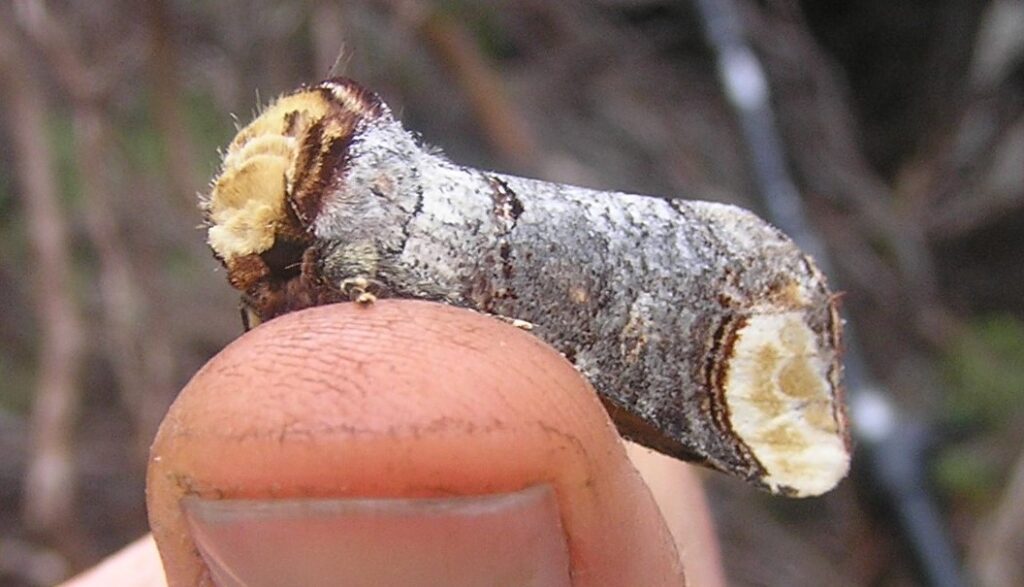
Ecosystems: bubbles of life
Coevolution creates communities of organisms, and communities of organisms form ecosystems. An ecosystem is a geographic area where plants, animals, and other organisms, as well as weather and landscapes, work together to form a ‘bubble of life’[3]. Ecosystem services is a widely used term, coined by economists, which means all the benefits we freely derive from nature. Think about it! All our food, our fuel, most of our medicines, our construction materials, our clean water, and clean air, they all come from nature. We are entirely dependent on ecosystem services that nature provides. And nature provides them because of the communities of organisms that have coevolved together to form ecosystems in a particular landscape.
What happens when alien species arrive?
Many alien species have been introduced to Ireland either deliberately or accidentally and many, such as beech and sycamore, have lived here for more than 400 years. Many cause no harm and they superficially fit into the landscape like native species. However, some alien species become both environmentally and economically harmful because they ‘invade’. They arrive without their natural predators, the climate suits them, and they often have very effective methods of reproducing and dispersing. For instance, a single flowering head of giant rhubarb (Gunnera tinctoria) can produce 250,000 seeds in one season[4].
As a result, invasive alien species can spread catastrophically, quickly dominating a landscape, outcompeting and killing native species (Image 2).
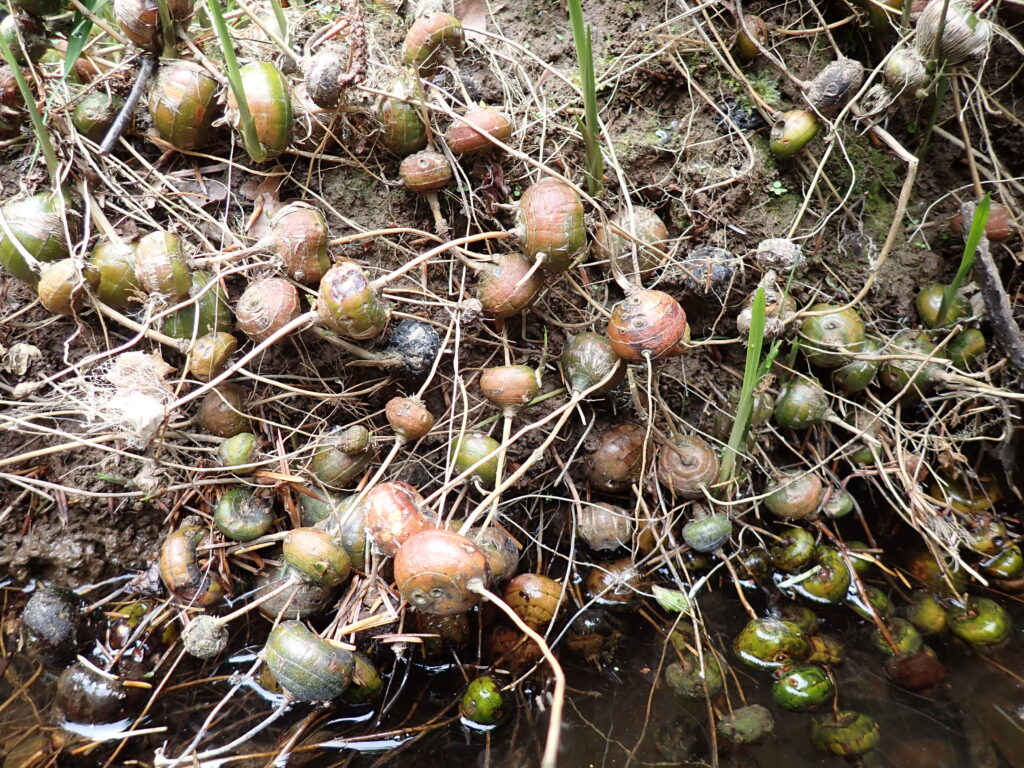
They disrupt the intricate, coevolved structure of native communities of organisms. This results in a shift in the structure of ecosystems, which then disrupts the capacity of that ecosystem to deliver its ecosystem services, on which we depend. Humans cannot survive when ecosystems stop providing their services.
What is being done to control invasive alien species?
Over the last 20 years, there has been a dramatic increase in our understanding of how invasive alien species can behave and, as a result, Europe has introduced two pieces of legislation which attempt to prevent and control their spread. The most important is the EC(Birds and Natural Habitats) regulations SI477 (2011) which was enforced in Ireland in 2014 and states that it is an offence to knowingly allow the spread or dispersal of the invasive alien species listed in Part 1 of the Third Schedule. The list can be found here: https://invasives.ie/app/uploads/2021/10/S.I.477-ThirdSchedule_SppLists_FromSource.pdf.
Seventy-six species are listed, including Japanese knotweed (Reynoutria japonica), giant hogweed (Heracleum mantegazzianum), and Rhododendron ponticum, but the list represents only a fraction of the many invasive alien plants that are becoming problematic in Ireland. This means that there are many invasive alien species in Ireland that are spreading uncontrollably because there is no incentive or requirement by landowners to take action. Winter heliotrope (Petasites fragrans)[5] and cherry laurel (Prunus laurocerasus)[6] would be two examples in County Clare.
More recently, the EU has prepared the Union List (also known as the EU Regulations) which puts the onus on member nations to control the introduction, spread, and invasion of species on the list. Many of these species have not yet arrived in Ireland, but it may only be a matter of time.
What can we do as individuals, communities, and organisations?
The problem of invasive alien species can become overwhelming because there are so many species and their impacts are so widely felt, environmentally and economically. It is a problem which needs an integrated approach in which all European nations, all government departments, all statutory bodies, and the whole wider community contribute.
Ireland has already demonstrated its capacity to deliver coordinated and well-planned actions against invasive diseases. In 2001, an outbreak of foot-and-mouth led to widescale spread across the UK, including a farm in South Armagh close to the Irish border, followed by further outbreaks over the following months. This led to cross-border cooperation to prevent the spread into Ireland. An analysis in 2002 by the Centre for Cross Border Studies (Clarke 2002) concluded that the skilled, proactive actions taken by the two agriculture ministers north and south of the border, along with other state agencies, successfully contained the spread and stopped what could have been the catastrophic consequences of a wide-scale outbreak[7].
Here are some of the many ways in which we can contribute:
- Raising awareness and being informed
Raising awareness and being informed are the two most valuable tools to curb the tide on invasive alien species. We can initiate a groundswell of knowledge and action if we are motivated to learn more as individuals and share that information.
At a national level, we can raise the subject with our TDs and Councillors and urge them to increase the mechanisms by which invasive alien species are prevented from arriving to Ireland. New Zealand has demonstrated that strict phytosanitation measures at ports and airports can substantially reduce the number of species that arrive on its shores[8], and we must make efforts to do the same in Ireland.
The need to raise awareness has never been more important. Research[9] shows that islands, such as Ireland, are disproportionally impacted by invasive alien species because of the high number of endemic[10] species. Particularly on the west, Ireland’s damp, warm climate attracts invasive alien species, including alien insects and fungi that can decimate plant populations[11].
2. Use Invasives.ie website
In 2022, the National Biodiversity Data Centre brought online its ‘Invasives’ website (https://invasives.ie). This user-friendly resource provides links to Ireland’s catalogue of alien species; invites everyone to record sightings of invasive species using a simple, online submission form, and provides a huge amount of practical information. The website allows you to find out more about the invasive alien species recorded as present in your local and wider area, submit sightings, contribute to national citizen science projects, and network with others.
3. Adopt biosecurity in all outdoor activities
Biosecurity means adopting hygiene in all our outdoor activities to prevent invasive alien species from arriving and spreading. Many invasive alien plants spread by seed and deadly fungal tree pathogens spread by microscopic spores, so it is easy to unwittingly disperse fragments from one area to another on shoes and clothing, garden equipment such as mowers and strimmers, vehicle tyres, and on animals feet.
The invasives.ie (https://invasives.ie) website provides good guidance on biosecurity. The key message is to keep everything clean. Clean your garden equipment and tools regularly and before and after you use it in a different location. If you go for a hike, clean muddy boots before you leave the area. Images 3-5 show a simple, home-made biosecurity station for cleaning boots. Check before buying topsoil, make sure that the seller can guarantee that it has been cleaned and does not contain invasive species. These and other simple changes we can make as individuals and communities all help to protect Ireland’s native species and genetic heritage by preventing the introduction and spread of invasive alien species.
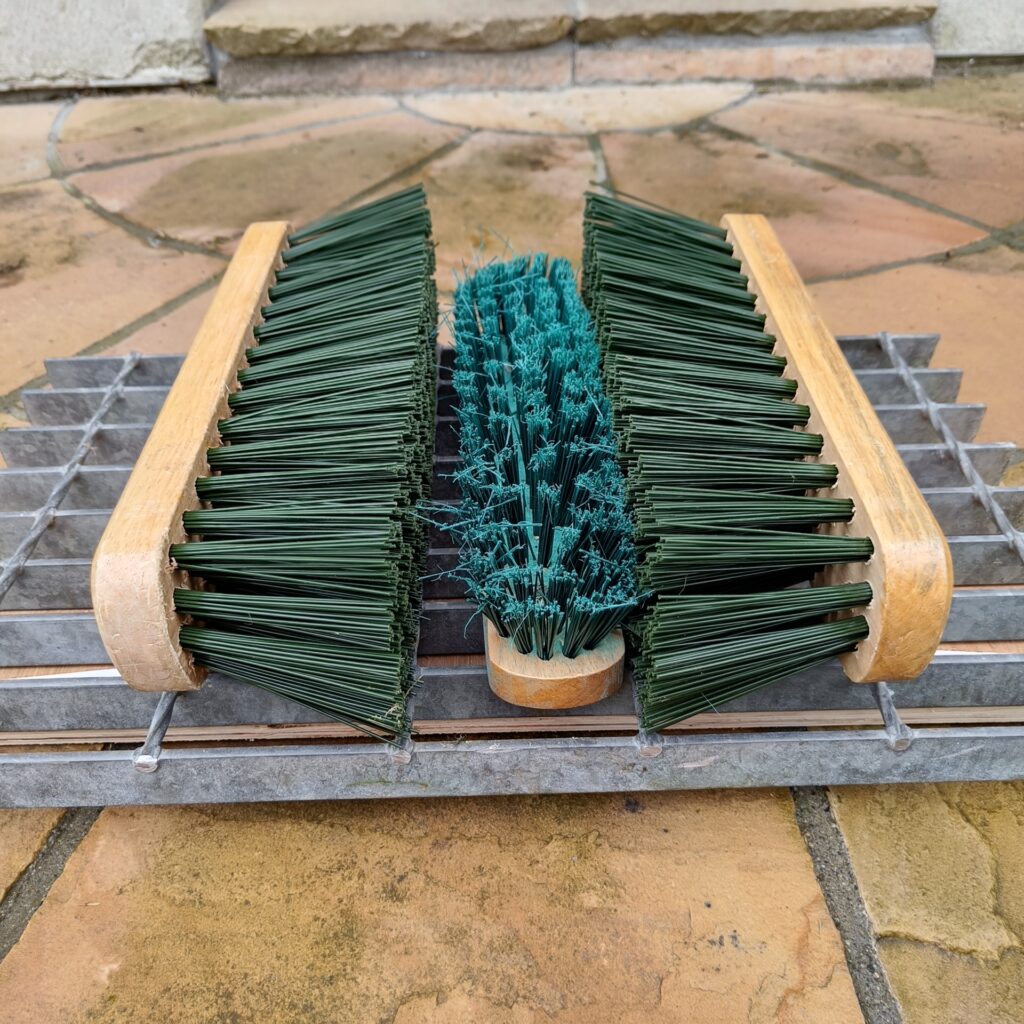
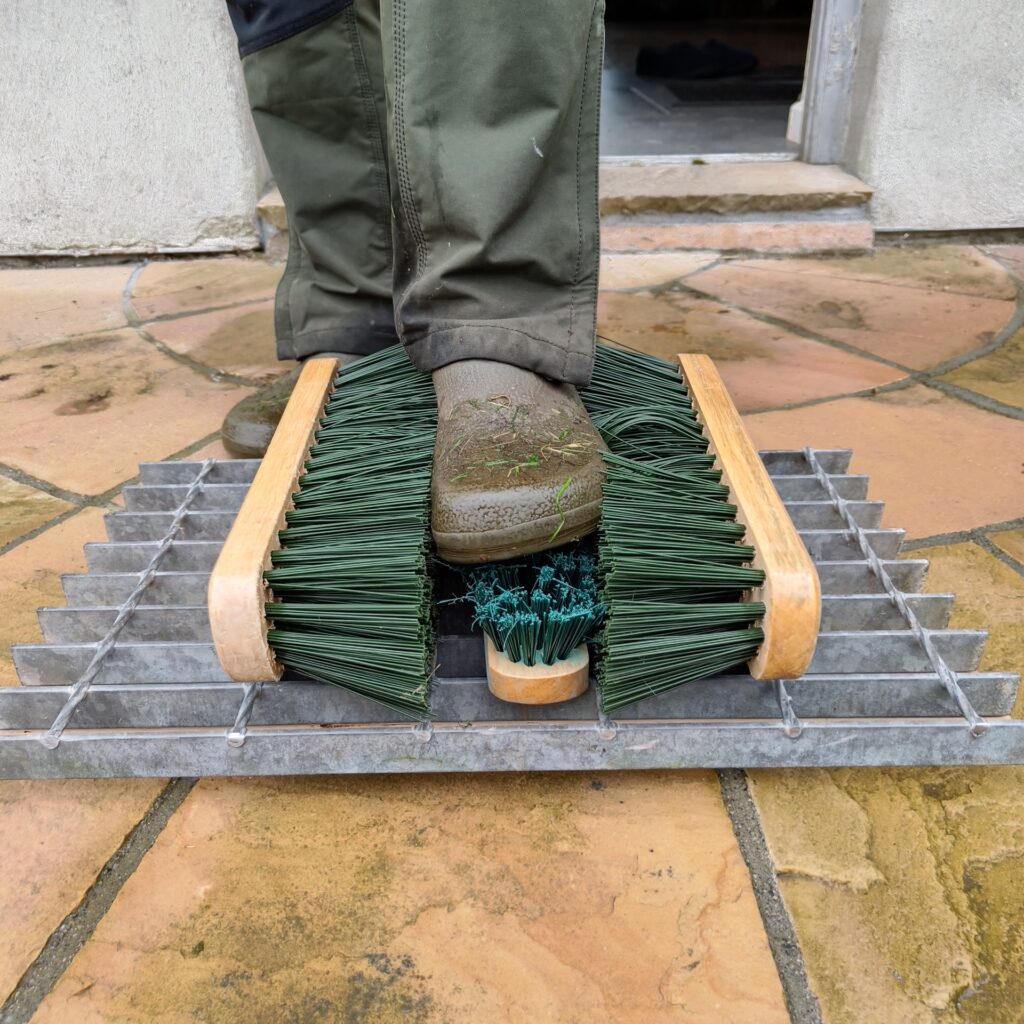
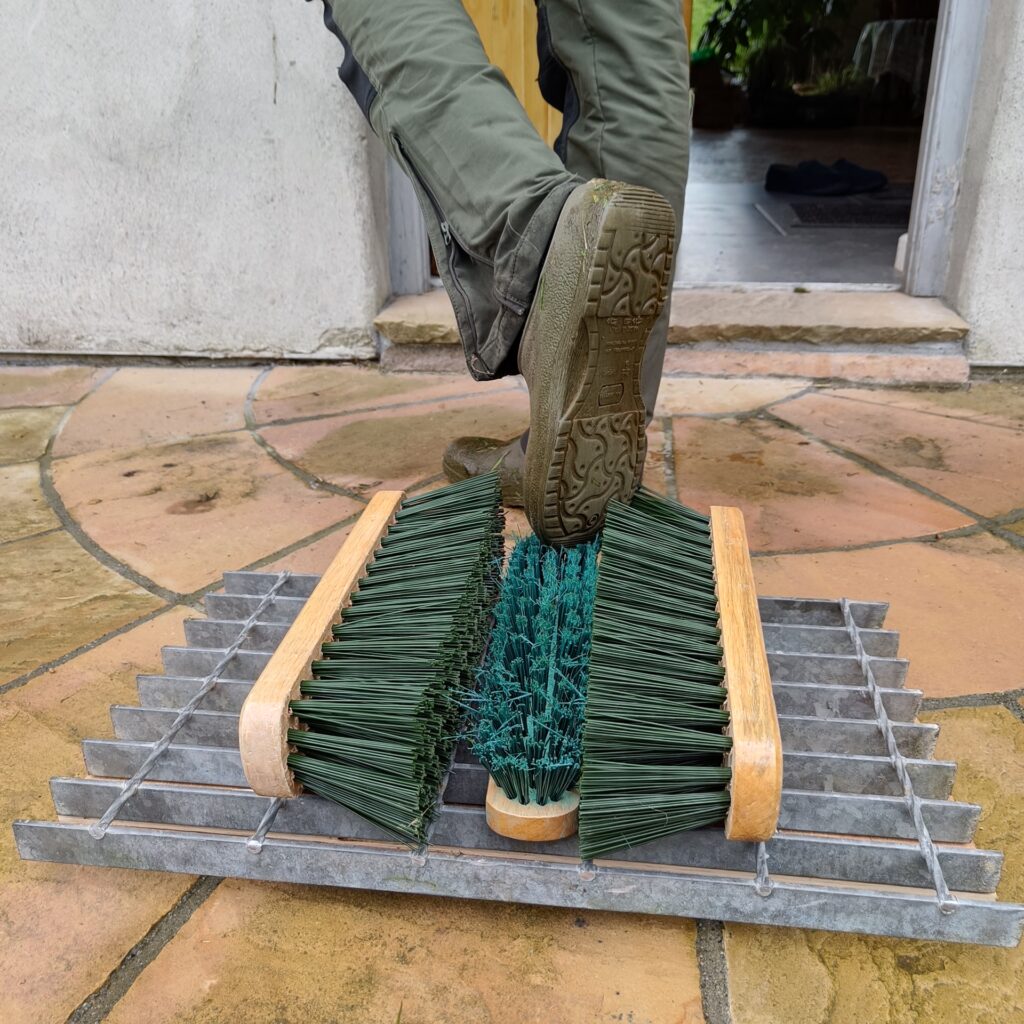
Home made biosecurity station
4. Be an invasives-aware gardener
Almost all invasive alien plants in Ireland are garden ornamentals that have ‘escaped’. Twenty years’ ago, there was very little awareness that garden plants can become invasive and we are experiencing the impact of this today. Don’t confuse the invasive alien three-cornered leek (Allium triquetrum)
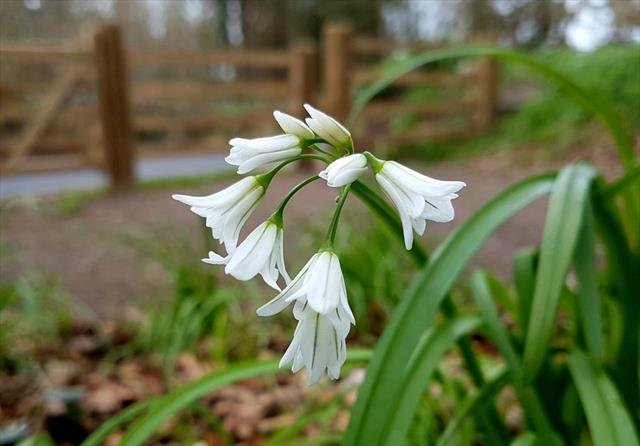
Three-cornered leek
with our beautiful native ramsons (Allium ursinum). Cotoneaster, widely planted as hedging or ground cover, is self-seeding across the dry limestone pavements and walls of the Burren and the speed of dispersal is outpacing control measures. Winter heliotrope (Petasites fragrans)
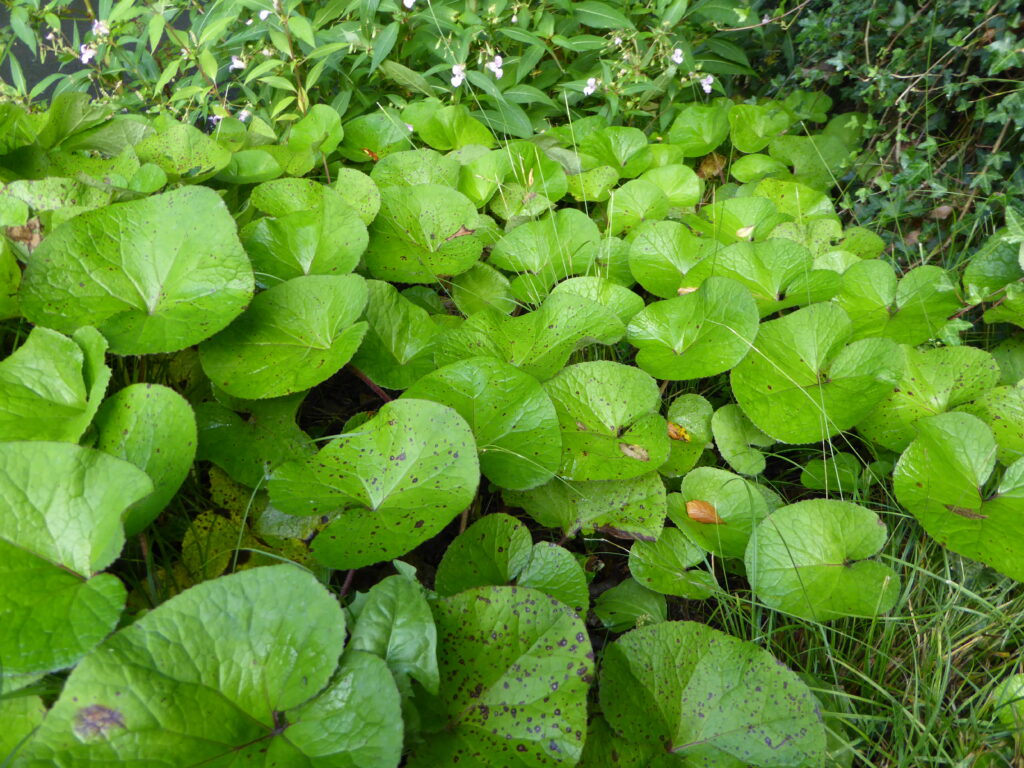
Winter Heliotrope
is sold in garden centres as a useful ground cover garden plant, but it has escaped and dominated hundreds of miles of road verge across the country. Grassy road verges are important habitats for insects and Ireland has experienced a massive decline in insect numbers in the last few years. We urgently need to protect our grassy verges from winter heliotrope and other invasive alien species.
Cherry laurel is widely sold as a hedging plant because it grows fast and densely. The problem is that it becomes as difficult to control as Rhododendron ponticum if poorly managed, and Rhododendron ponticum is near the top of the list of the most serious invasive alien plants in Europe.
Be cautious about the plants you buy at garden centres. Avoid ground cover plants which have rhizomes, like Japanese knotweed and winter heliotrope, which can be very challenging to contain. Be very cautious about buying aquatic plants for garden ponds, as highly invasive species are being sold as oxygenators. The invasives.ie website is a useful resource for checking out which garden plants could become problematic.
Endnote
Invasive alien species are here to stay, it would be impossible to eradicate all known records from Ireland. However, we can all help to prevent their arrival by being vigilant, adopting biosecurity in our outside activities, and by submitting records of invasive alien plants when we find them to the https://invasives.ie website. All your contributions are important as they help to map the spread of invasive alien species and, in some cases, can help to identify how and where they were introduced.
If we can all clear a small infestation of an invasive alien species we create a space for a native species to return to. Together, our collective action can have a huge and positive impact for our biodiversity and ecosystem services.
[1] Stroh, P. et al. Plant Atlas 2020. Mapping Changes in the Distribution of the British and Irish Flora. Princeton University Press, 2023. https://bsbi.org/plant-atlas-2020
[2] https://greatirishgrasslands.ie
[3] National Geographic definition of an ecosystem.
[4] https://invasives.ie/app/uploads/2021/09/Gunnera_tinctoria_ISAP.pdf
[5] https://species.biodiversityireland.ie/profile.php?taxonId=43895
[6] https://species.biodiversityireland.ie/profile.php?taxonId=28940
[7] For further information: Clarke, P. (2002). The Foot-and-Mouth Disease Crisis and the Irish border. Centre for Cross Border Studies, Armagh. Available at http://crossborder.ie/the-foot-and-mouth-disease-crisis-and-the-irish-border/
[8] Hulme, P.E. Plant invasions in New Zealand: global lessons in prevention, eradication and control. Biol Invasions 22, 1539–1562 (2020). https://doi.org/10.1007/s10530-020-02224-6
[9] Russell, J. et al. (2017). Invasive alien species on islands: Impacts, distribution, interactions and management. Environmental Conservation, 44(4), 359-370. doi:10.1017/S0376892917000297
[10] Endemic means the some plant and animal species are unique to Ireland.
[11] Ash dieback disease caused by the invasive alien fungus, Hymenoscyphus fraxineus, has decimated our ash tree populations in the last 12 years, and they may never recover.